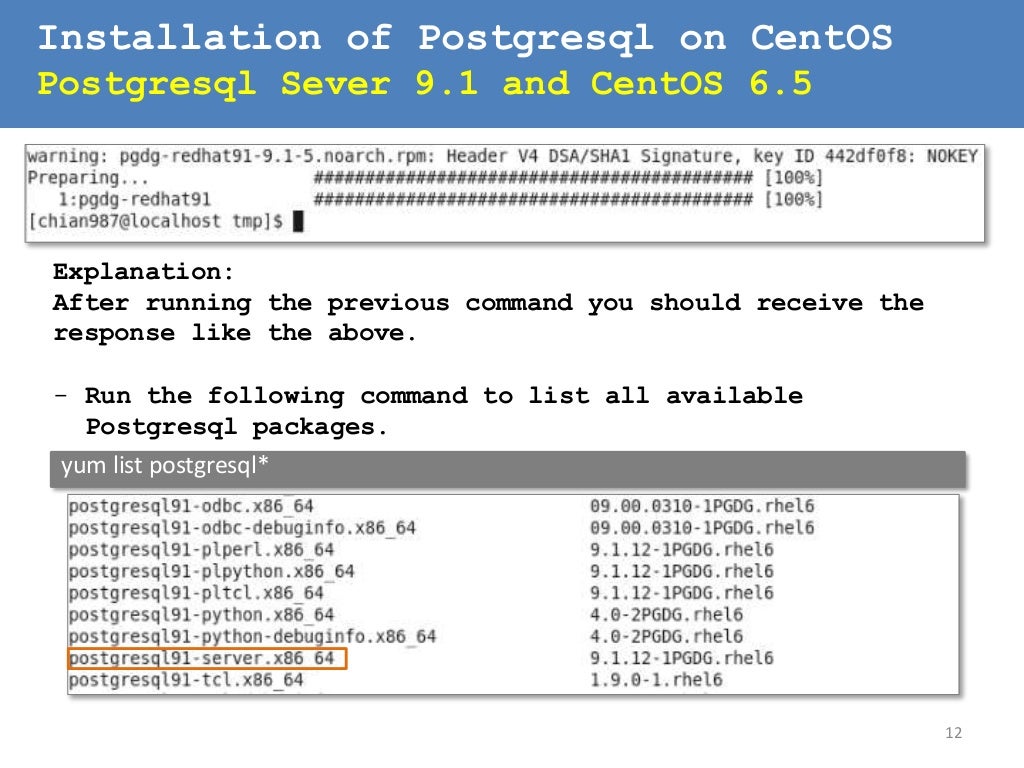

- Postgresql install how to#
- Postgresql install install#
- Postgresql install update#
- Postgresql install code#
You can leave this as default if you’re unsure what to enter.
Postgresql install install#
Specify directory where you want to install PostgreSQL. Step 2:Ĭlick on the executable file to run the installer. Postgres Installer is available for PostgreSQL 9.5, 9.6, 10, 11, and 12(beta). We’re going to cover all three of them in this guide.ĭownload and Install PostgreSQL via Graphical Mode - Step by Step Guide Step 1:ĭownload Postgres Installer here. Postgres Installer supports three modes of installation Graphical, Unattended and Text.
Postgresql install how to#
If you liked this post on how to install PostgreSQL on Ubuntu 22.04, please share it with your friends on social networks or simply leave a reply below.Here’s a step by step guide to install PostgreSQL on your machine using Postgres Installer. They are available 24×7 and will take care of your request immediately. Of course, you don’t have to install PostgreSQL on Ubuntu 22.04 if you use one of our PostgreSQL VPS Hosting plans, in which case you can simply ask our expert Linux admins to install PostgreSQL 14 on Ubuntu 22.04 for you. sudo systemctl restart rviceĬongratulations! You successfully installed and configured the latest PostgreSQL 14 version on Ubuntu 22.04. Save the file, close it and restart the PostgreSQL service for the changes to take effect. The default value of shared_buffers is 128MB.
Postgresql install code#
To increase the memory usage of PostgreSQL open the /etc/postgresql/14/main/nf file and configure the following lines of code to look like those described below: shared_buffers = 256MB Save the file, close it, and restart the PostgreSQL service for the changes to take effect. To allow remote access so PostgreSQL can be accessed from everywhere, you need to open the /etc/postgresql/14/main/pg_hba.conf file and configure the following lines of code to look like those described below: host all all 0.0.0.0/0 md5 To quit from the PostgreSQL shell, just type “\q.” You are now connected to database "postgres" as user "postgres". You should receive the following output: postgres=# \c postgres To select a database, execute the \c “database name” command: Template1 | postgres | UTF8 | en_US.UTF-8 | en_US.UTF-8 | =c/postgres + Template0 | postgres | UTF8 | en_US.UTF-8 | en_US.UTF-8 | =c/postgres + Postgres | postgres | UTF8 | en_US.UTF-8 | en_US.UTF-8 | Name | Owner | Encoding | Collate | Ctype | Access privileges You should receive the following output: postgres=# \l To list the databases, execute the \l command: You should receive the following output: sudo -u postgres psql To access the PostgreSQL console execute the following command on your server: sudo -u postgres psql In the next few paragraphs, we are going to show you some of the basic PostgreSQL commands and configurations. In this file, you can configure incoming connections, security and authentication, resource usage, etc. The configuration changes of PostgreSQL 14, are locate at /etc/postgresql/14/main/nf on your server. You should receive the following output: sudo psql -version To check the installed PostgreSQL version, execute the following command: sudo psql -version You should receive the following output: sudo netstat -tunlp | grep 5432 Jun 17 12:42:57 systemd: Finished PostgreSQL RDBMS.Īnother way to check about the PostgreSQL service and port is to run the command below: sudo netstat -tunlp | grep 5432 Jun 17 12:42:56 systemd: Starting PostgreSQL RDBMS. Main PID: 370897 (code=exited, status=0/SUCCESS) Loaded: loaded (/lib/systemd/system/rvice enabled vendor preset: enabled)Īctive: active (exited) since Fri 12:42:57 UTC 1min 27s ago You should receive the following output: sudo systemctl status rvice sudo systemctl enable rvice & sudo systemctl start rviceĬheck if the service is up and running: sudo systemctl status rvice

Once, installed start and enable the PostgreSQL service. The latest PostgreSQL version 14 is available in the default repository of Ubuntu 22.04, so we just need to execute the command below: sudo apt install postgresql postgresql-client
Postgresql install update#
sudo apt-get update -y & sudo apt-get upgrade -y Step 2. We need to update the system packages to the latest versions available.



 0 kommentar(er)
0 kommentar(er)
